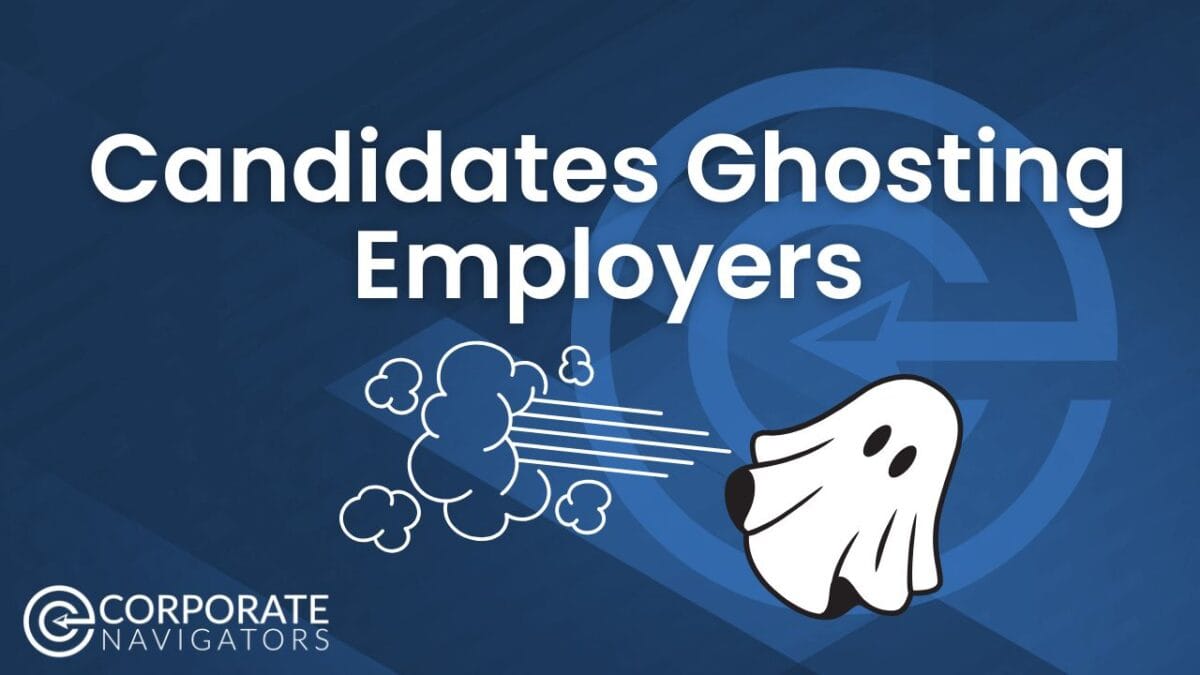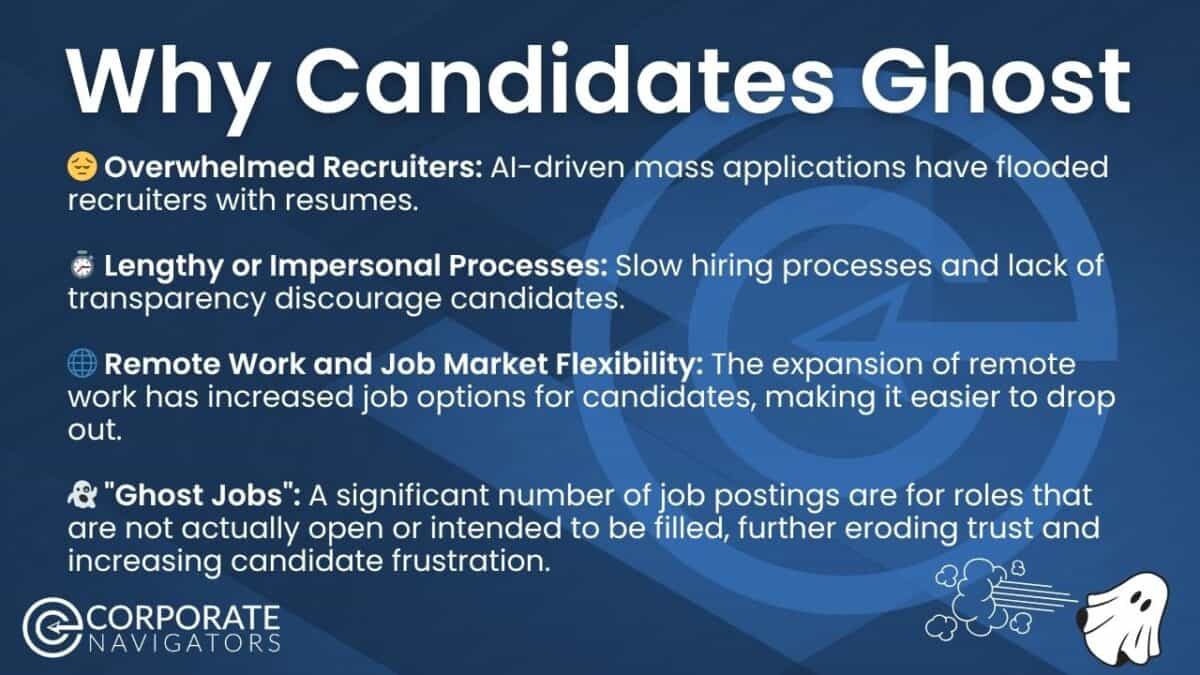
Table of Contents: Ghosting Candidates
41% of Recruiters Report “Candidate Ghosting” as a Serious Problem
2025 has proven to be a challenging year for recruitment, though its difficulties are not insurmountable. With proactive talent sourcing, effective branding and promotion, and proper candidate screening practices, common problems can be mitigated. Today’s topic is job seekers ghosting during the recruitment process, a problem that plagues almost half of today’s recruiters.
What is Candidate Ghosting?
Candidate ghosting is when job seekers abruptly cease communication with employers during the hiring process. It has become a significant and growing challenge for organizations in 2025. The trend is now widespread, with both candidates and employers increasingly disengaging without notice.
A Pretty Big Pain Point
According to SHRM’s Talent Trends Report, the biggest pain points for U.S. recruiters include a low number of qualified applicants (51%), heavy competition from other employers (50%), and candidates “ghosting” or dropping out of processes (41%). Other common hurdles include skills mismatches (e.g. candidates lacking required experience) and the inability to meet candidate demands for higher pay or flexible work.
In sum, talent acquisition teams must sift through more applicants than before, but often struggle to find the right talent who sticks through the hiring process. This painful combination of low-quality job applicants to ghosting candidates has made a negative impact on hiring teams and companies that need to fill roles with qualified employees.
Prevalence and Trends
According to recent data, 44% of candidates admit to ghosting employers, while 53% report being ghosted by employers themselves. This marks a notable rise compared to prior years and highlights a mutual breakdown in communication.
After job interviews specifically, 61% of U.S. job seekers say they were ghosted by an employer, up nine percentage points since April 2024. This issue is even more acute among historically underrepresented candidates, with 66% experiencing post-interview ghosting.
The surge in ghosting is attributed to several factors, including the increased use of AI tools that enable mass applications, overwhelming recruiters, and making it harder to maintain personalized communication.

The Reasons Behind Candidate Ghosting
Several factors are driving the rise in candidate ghosting:
😔 Overwhelmed Recruiters: AI-driven mass applications have flooded recruiters with resumes, making it difficult to respond to every candidate and leading to communication breakdowns.
⏱️ Lengthy or Impersonal Processes: Slow, multi-stage hiring processes and lack of transparency discourage candidates, prompting them to disengage and disappear if they find better opportunities elsewhere.
🌐 Remote Work and Job Market Flexibility: The expansion of remote work has increased job options for candidates, making it easier to drop out of one process in favor of another, often without notifying the employer.
👻 “Ghost Jobs”: A significant number of job postings are for roles that are not actually open or intended to be filled, further eroding trust and increasing candidate frustration. Around 18–22% of postings at any given time may be “ghost jobs”
The Impact Candidate Ghosting Has on Employers
- Operational Disruption: Candidate ghosting leads to delays in filling positions, wasted time and resources, and can force employers to restart the hiring process.
- Employer Brand Damage: Repeated ghosting incidents can harm a company’s reputation, discourage future applicants, and reduce the overall quality of the candidate pool.
- Productivity Loss: Unfilled roles and disrupted hiring timelines directly impact organizational growth and productivity.
Industry Response
Major job platforms are introducing transparency tools, such as responsiveness badges and insights, to hold employers accountable and encourage better candidate communication. However, the mutual nature of ghosting means both sides are affected, with trust and professionalism eroding across the hiring landscape.
Combating Candidate Ghosting with Enhanced Engagement
Candidate ghosting—when applicants suddenly stop responding during the hiring process—remains a frustrating challenge. To minimize this, recruiters are focusing on improving communication, providing timely feedback, and creating a more transparent hiring journey.
Personalized outreach, regular updates, and a positive candidate experience can help keep applicants engaged and reduce dropout rates, giving organizations a competitive edge in a tight labor market.
Innovative Strategies to Attract Qualified Candidates
With a shortage of qualified applicants topping recruiters’ concerns, organizations are rethinking their sourcing strategies. Many are investing in employer branding, leveraging social media, and building partnerships with educational institutions to tap into emerging talent.
Others are using AI-powered tools to identify passive candidates and streamline the screening process. By adopting creative approaches and expanding their talent pipelines, employers can increase their chances of finding the right fit for their open roles.
Identify Real, Engaged Candidates with Corporate Navigators
Recruiters face a dynamic and competitive landscape, with qualified talent in high demand and candidate behavior evolving rapidly. By understanding the root causes of these pain points and implementing innovative solutions, organizations can not only attract but also retain top talent. Adapting to these challenges will be key to building strong, resilient teams in the years ahead.


